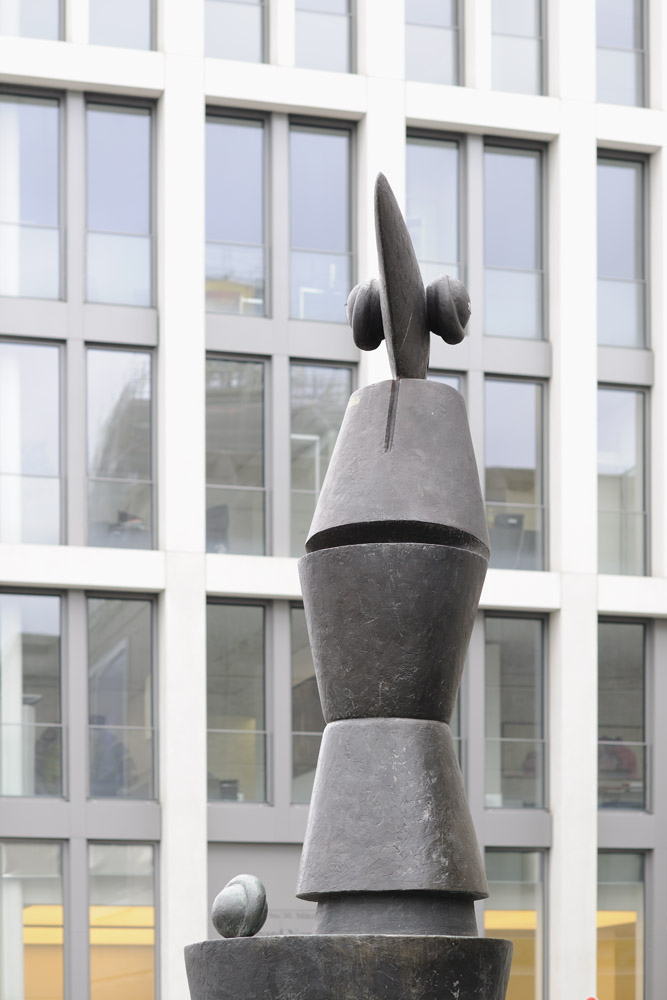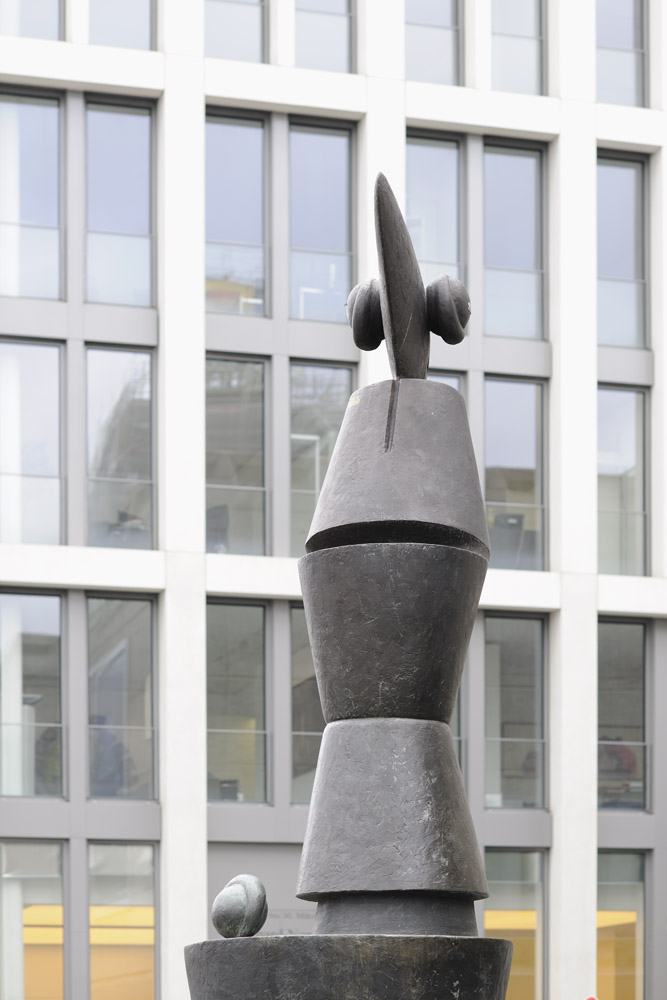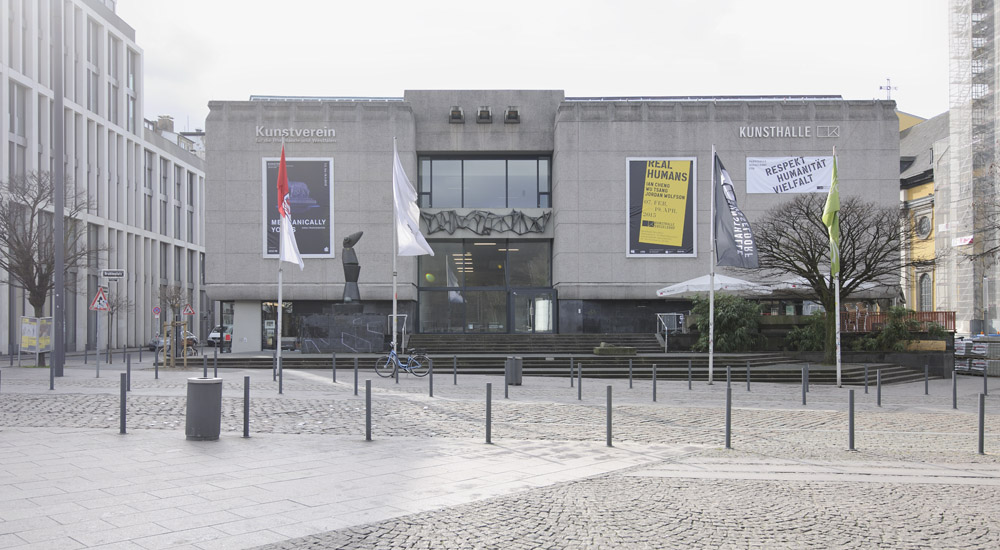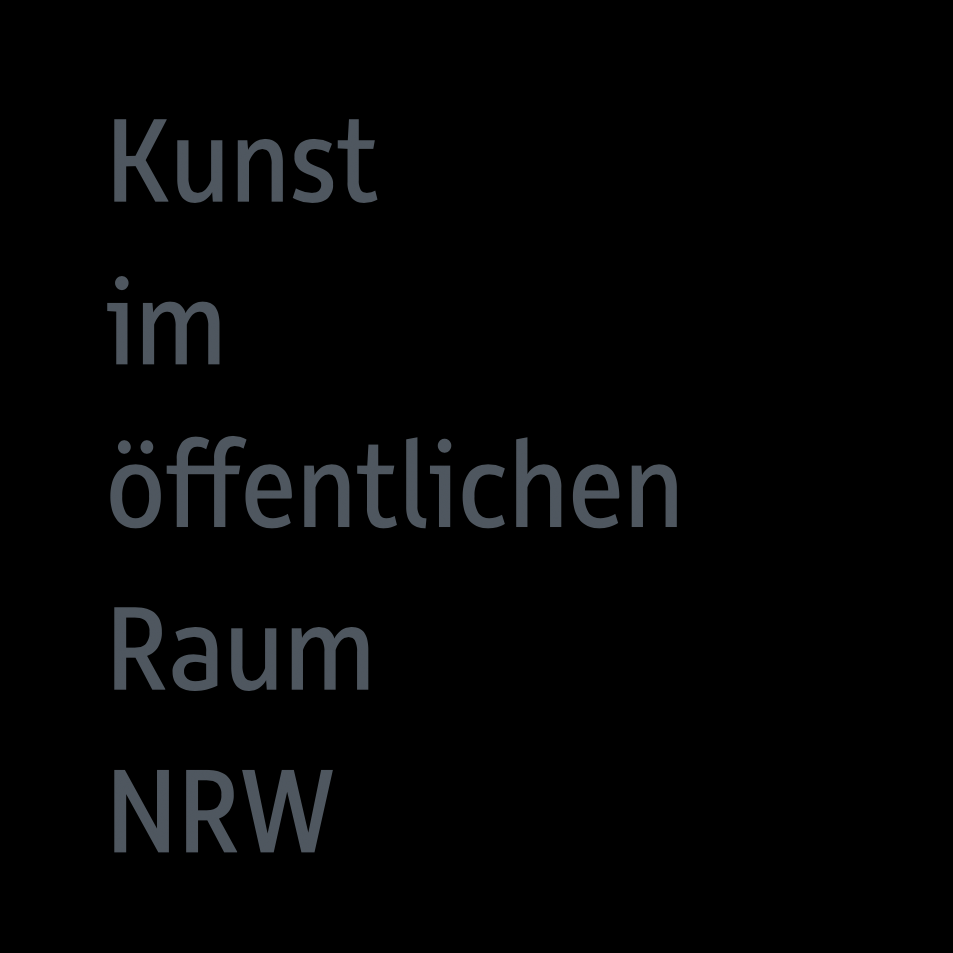Habakuk






Habakuk illustrates how Max Ernst was influential not only as a painter and graphic designer, but also as a sculptor. In the 1930s, the artist created sculptures by casting every day and found objects in plaster. Remaining true to the concept of the collage, he would combine them into sculptural formations, which he would then cast in bronze. The fantastical titles he gave them would incorporate associations with humans or animals. Using the same process, Habakuk is the result of a collage made up of various large flowerpots, bowls, and pebbles. It is based on a smaller bronze version from 1934, which in turn goes back to the plaster cast of an existing collage (Ludwigshafen, Wilhelm-Hack-Museum). The sculpture in front of the Kunsthalle is also enlarged to scale. This enlargement, combined with the fact that all of the elements have been refined and unified through by the bronze casting, means that the original materials are no longer recognizable. A surreal hybrid with bird-like features and the name of a biblical prophet emerges, while the sculptural qualities of the forms are put into focus.
Reference:www.welt-der-form.de
Max Ernst
← Zur Startseite
Grabbeplatz (in front of the Kunsthalle), 40213 Düsseldorf



